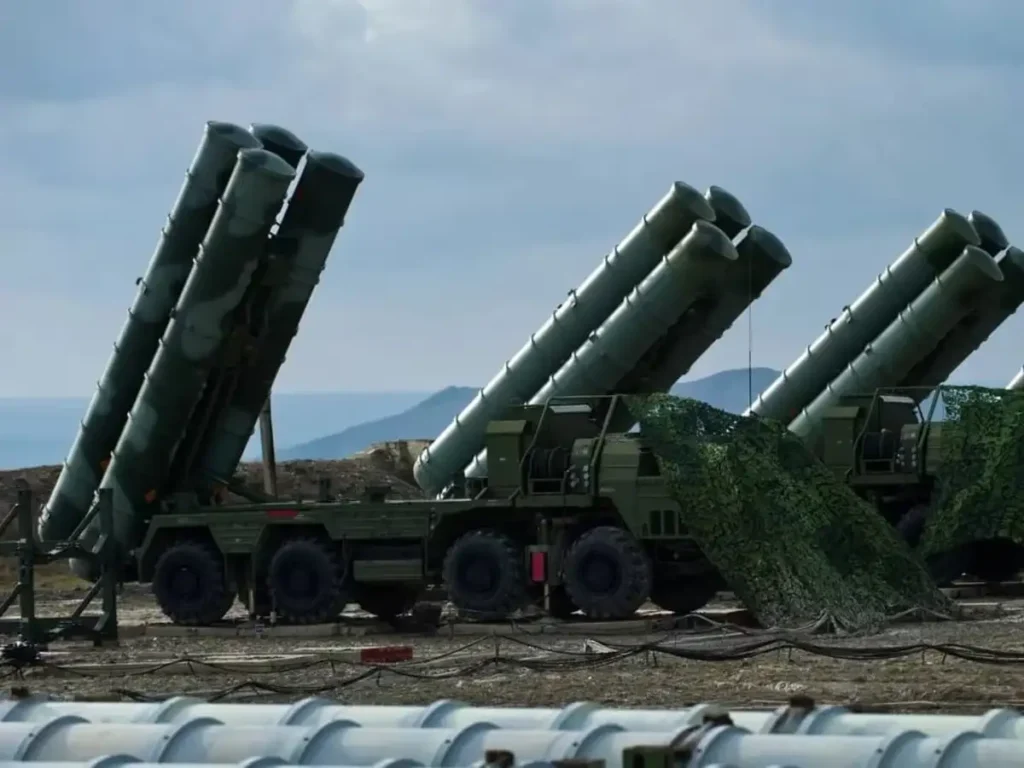India’s S-400 vs Pakistan’s HQ-9: Who Has the Upper Hand in Air Defense Amid Escalating Tensions?

As military tensions flare once again between India and Pakistan, both nations are reinforcing their defense postures — particularly in the realm of air security. At the forefront of this build-up are two major missile defense systems: India’s Russian-built S-400 Triumf and Pakistan’s Chinese-made HQ-9. While both are designed to protect against airborne threats, a closer examination reveals a notable disparity in performance and capabilities.
India’s S-400 Triumf: A Strategic Game-Changer
India’s acquisition of the S-400 has significantly bolstered its air defense architecture. This advanced system, developed by Russia’s Almaz Central Design Bureau, is widely acknowledged as one of the most powerful surface-to-air missile platforms in operation today.
Capable of detecting and neutralizing a wide range of threats — from fighter jets and bombers to cruise and ballistic missiles — the S-400 has a maximum interception range of 400 kilometers. It supports multiple missile types, each tailored to engage targets at varying distances and altitudes. This layered defense approach enables simultaneous targeting across multiple threat levels.
Its radar suite is equally formidable. The S-400 employs advanced phased-array radar capable of tracking up to 80 aerial objects at once. It can monitor the skies for hundreds of kilometers and respond within seconds, giving Indian forces a critical edge in early warning and fast interception.
Moreover, the system is built to resist electronic countermeasures, making it a reliable choice in high-conflict zones where jamming and deception tactics are common.
Pakistan’s HQ-9: Strong, but Limited in Scope
Pakistan’s HQ-9 is a key component of its air defense network, supplied by long-time strategic ally China. Designed by China’s defense industry as a counterpart to earlier Russian systems like the S-300, the HQ-9 offers a mix of range and precision.
Depending on the missile variant, the HQ-9 can hit targets between 125 and 200 kilometers away. It can engage aircraft, drones, and some types of missiles, and is particularly effective in protecting vital installations and urban centers.
However, compared to the S-400, the HQ-9 lacks the same reach, target diversity, and advanced radar tracking. Its engagement envelope is narrower, and it is not as well suited to intercepting high-speed ballistic threats at long distances.
While it has been deployed in areas of strategic importance — including near the Line of Control (LoC) — it is best used for localized air defense rather than wide-area coverage.
Operational Readiness and Real-World Application
India has strategically positioned its S-400 systems along its northern and western borders, ensuring a robust shield against threats from both Pakistan and China. These deployments are fully integrated with the country’s broader air command structure, enhancing response time and coordination across services.
Recent military drills and high alert levels have demonstrated the system’s rapid deployment and operational readiness. According to defense experts, the S-400’s presence alone acts as a powerful deterrent, creating a virtual “no-fly zone” that enemy aircraft would think twice about entering.
Pakistan’s HQ-9 system, while a major step forward for its air defense strategy, is more reactive than preemptive. It excels at protecting specific locations but lacks the comprehensive coverage needed for larger-scale operations or multi-directional threats.
Integration and Interoperability
A crucial difference between the two systems lies in how well they integrate into each country’s existing defense networks.
The S-400 seamlessly interfaces with India’s indigenous air surveillance and missile platforms, such as the Akash system and various radar arrays. This integration ensures overlapping fields of coverage and minimizes response delays.
On the other hand, the HQ-9, though effective within its own ecosystem, may struggle with full interoperability across Pakistan’s mixed inventory of Western and Chinese technology. This can lead to coordination gaps, especially during high-tempo operations.
Diplomatic Weight and Strategic Implications
India’s decision to go ahead with the S-400 purchase despite potential U.S. sanctions under the CAATSA framework highlights the importance it places on strategic autonomy. The deal not only strengthened India’s defense capability but also sent a clear message about its foreign policy direction — prioritizing national security above geopolitical pressure.
Pakistan’s partnership with China, meanwhile, continues to grow in both economic and military domains. The acquisition of the HQ-9 aligns with this trajectory. However, critics argue that over-reliance on Chinese defense systems could limit Pakistan’s flexibility in future multilateral defense arrangements.
Expert Opinions: A Clear Gap in Capability
Military analysts are largely in agreement: India holds a clear advantage in long-range air defense. The S-400’s ability to detect, track, and destroy a variety of threats — at longer ranges and higher speeds — gives it superiority over the HQ-9 in almost every operational aspect.
Retired defense officials in India have noted that the S-400 offers enough reach to cover significant portions of Pakistani airspace from within Indian territory. Conversely, the HQ-9, while a strong deterrent in its own right, is unlikely to threaten Indian air dominance beyond localized zones.
Conclusion: India’s Edge in the Sky
When comparing the S-400 and the HQ-9, the gap in capabilities is hard to ignore. India’s system offers a broader range, faster response, superior tracking, and deeper integration into a well-established air defense grid. In contrast, Pakistan’s HQ-9 serves as a capable, but more limited, defense measure aimed at countering immediate threats.
As border tensions persist, these systems will remain central to both nations’ military planning. For now, however, India’s air defense shield stands taller, offering a more formidable and future-ready solution against aerial threats.






